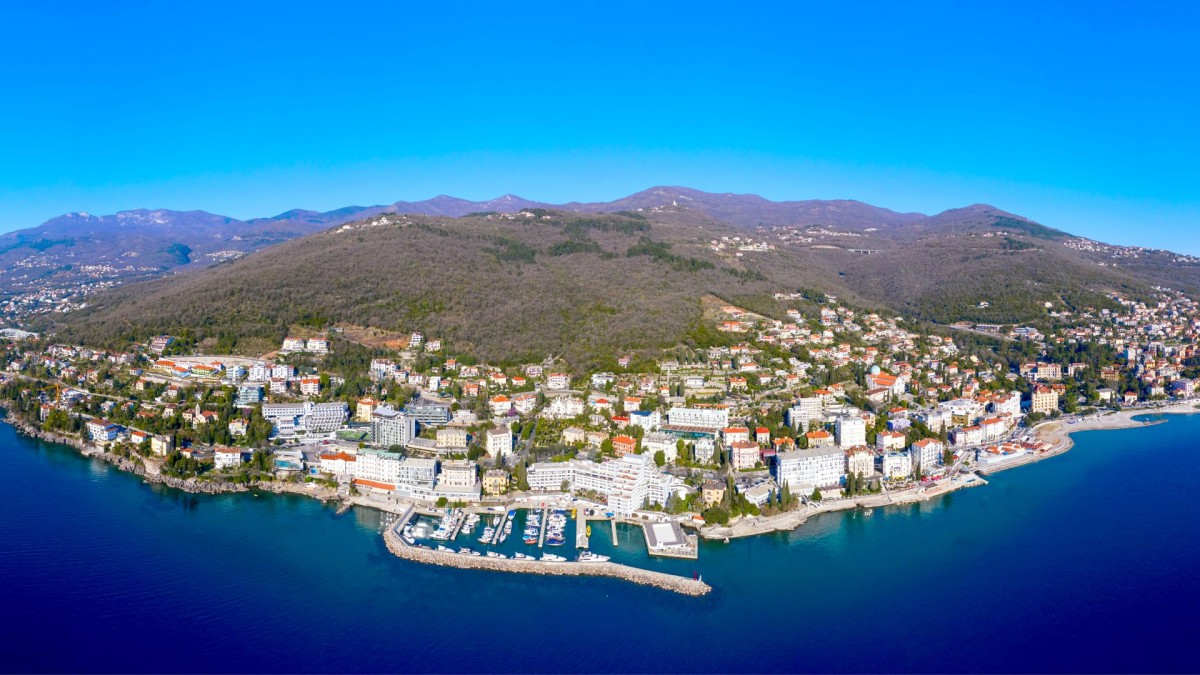
Opatija, a coastal town just 18 kilometers southwest of Rijeka, is where many consider Croatian tourism launched on the coast long ago. The star of the Kvarner Gulf is applauded as such thanks to its seaside glamor, where old villas meet the Adriatic. A summer health resort that brought tourism to life.
But it isn’t all about summer here.
Opatija is praised as the cradle of Croatian tourism because it was also a go-to winter resort. A destination where travelers flocked for wellness by the sea, no matter the time of year.
Opatija has kept its promise as one of the Adriatic’s pearls, and we’re diving into this divine coastal town as one destination you can’t miss on your next sailing trip.
History
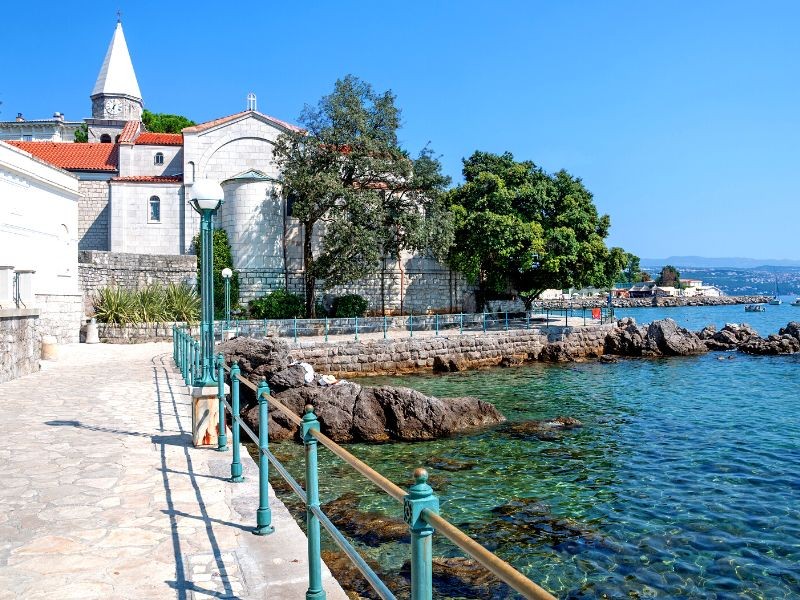
Did you know that ‘Opatija’ is the Croatian word for abbey? Namely, Opatija’s history is centered around one of its most famous buildings - the Church of St. James, constructed sometime around 1420. This church and its monastery are how the town gained its name.
Four centuries after this institution was built, Opatija began developing from a quaint fishing village to an elite resort, which came with the construction of its first summer house in 1844. Iginio Scarpa’s Villa Angiolina is considered the catalyst for Opatija tourism, allowing European travelers and many famous faces to discover the town, from Austro-Hungarian Emperor Franz Joseph to Empress Maria Ana and Ban Josip Jelačić.
And this was indeed only the beginning, as tourism boomed here after a train was introduced from Vienna through Semmering, Graz, and Ljubljana to Trieste and Rijeka. Thus, four decades later, Hotel Quarnero became the first Croatian hotel on the Adriatic. Built in 1884, its architecture is renowned as a synonym for the elegance and refinement of Opatija hotels. Considering its impressive construction lasted only ten months, it’s incredible that this hotel still stands today as Hotel Kvarner!
Drawing comparisons to the French town of Nice, Opatija’s image as a destination for wellness was further established in the following years, resulting in the construction of many seaside villas, holiday homes, promenades, and parks. In 1889, Opatija was officially declared a climatic health resort.
Opatija’s history is best shown at the Croatian Museum of Tourism, while many living monuments of the past decorate the town today.
Marinas
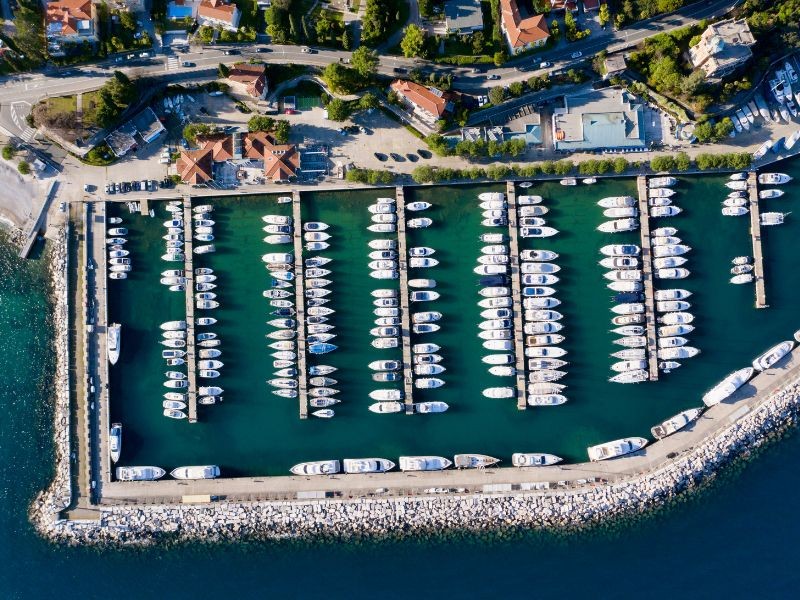
The northern Adriatic’s maritime tradition is traced back 30 centuries, or to the 9th century BC when the descendants of Liburnians lived here. Known for building fast ships made of wooden planks and sewn ropes, they traveled in them to North Africa and Asia Minor!
There are many reasons why Opatija is a dream stop for boaters, and its ACI marina is certainly one of them. Open year-round with 283 berths, this marina is located in the town of Ičići, less than 4 kilometers away, with a famous beach nearby. This marina is also one of ten ACI marinas that boast the Blue Flag award.
Marina Admiral is another excellent starting point for sailing trips around the Opatija Riviera, Kvarner, Bay, and Istria. Located in the heart of the town next to Hotel Admiral, this marina has 160 berths and is categorized with four anchors - the equivalent of a 5-star hotel!
Restaurants
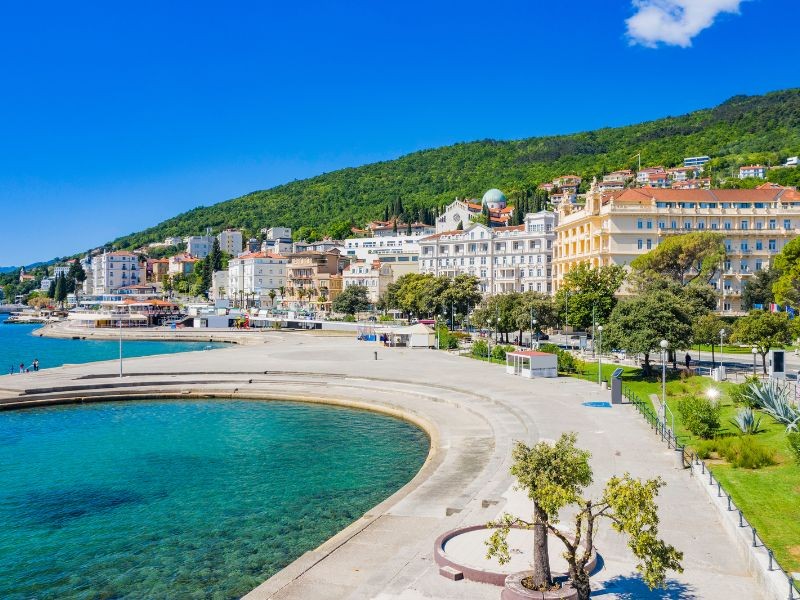
And where to eat in Opatija? Many travelers head to Ruzmarin, founded in 1986 as a family-run tavern that follows the philosophy of its name. Ruzmarin, or rosemary in English, is known as a symbol of friendship, remembrance, and love. Today, this restaurant is a leader of Opatija’s applauded hospitality and restaurant scene, serving everything from pasta to pizza and traditional peka dishes.
For something more upscale, head to the design hotel Navis and its Michelin-recommended restaurant. Overlooking the protected Preluk Bay, this bistro offers more than its breathtaking views of the Adriatic. A culinary experience influenced by its terrain, this imaginative menu includes locally sourced seafood dishes like tuna carpaccio, lobster, oysters, Istrian truffles, gregada fish stew, award-winning extra virgin olive oil from Istria, and additive-free homemade bread.
For a dose of tradition, head to the 19th-century Villa Ariston for a gastronomic journey led by Miro Šobot. Balancing tradition, the flavors of the region, and creativity, dine here for a selection of seafood dishes or one of the finest lamb types in Croatia from Cres Island.
Beaches
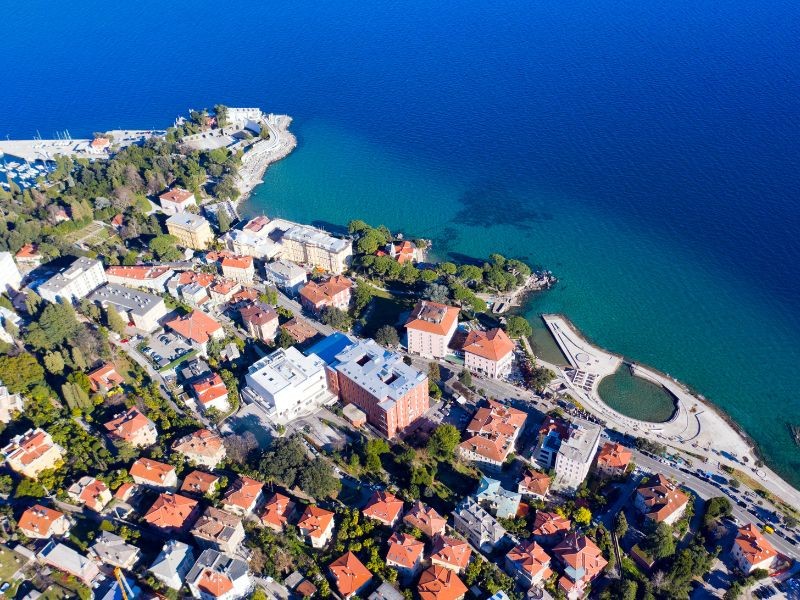
This stunning town certainly has its share of sublime beaches, like Slatina. Opatija’s most famous beach is located in the center of town, making it even more impressive when you factor in that it carries a Blue Flag for sea quality. Decorated with lounge chairs and umbrellas and set in front of many restaurants, bars, and shops, this beach is an easy go-to if you’re looking for a simple dip in the sea.
And if you want to mix a bit of history with your beach time? Head to Lipovica, a small pebbled beach set to the backdrop of 1920s summer villas. Located just outside the city center, this beach is usually not overrun by tourists and is an excellent spot to bring the kids.
But if you want the local’s favorite? Črnikovica beach in the fishing village of Volosko is a must. A concrete and pebbled beach that boasts a sandy bottom, you can easily access its shallow sea and gear up for a popular ball game of picigin with speedo-clad locals.
Activities
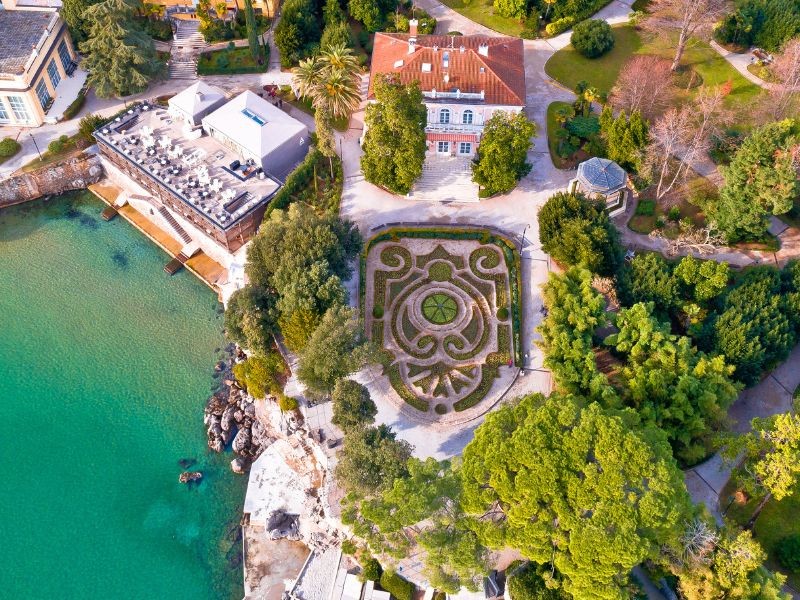
From churches to parks, statues to villas, and unbeatable coastal promenades, Opatija has a lot to offer tourists visiting on holiday.
But let’s start with its most famous attraction - the Church of St. James. We’ve already mentioned that this church and monastery are responsible for Opatija’s name. Likely built in 1420 for Benedictine refugees, not much has been preserved of this original building. The church was reconstructed in the early 1500s, fully renovated in the 18th century, and expanded in 1930. Today, it houses a replica of one of Mestrović’s relievos, while visitors can also enjoy St. James’ Park next to the church, with green lawns that stretch to the sea, a neo-baroque fountain, and sculptures of Helios and Selene.
And while we are on the topic of parks, you can’t miss Angiolina Park, certainly Opatija’s most famous. The camellia flower dominates this park so much that it is now a town symbol. Hundreds of plant species from around the world can also be found here, including the American pine and Himalayan cypress. The paths of this park lead you to another famous attraction - Villa Angiolina.
Villa Angiolina, the building that kicked off tourism in Opatija in 1884, today houses the Croatian Museum of Tourism, where you can explore the history of tourism through old photographs, postcards, and posters. Lush gardens envelop the restored villa with Opatija’s favorite flower - camellias. Not far from the estate is the Juraj Šporer Art Pavilion, originally built as a pastry shop in 1900 and named after a physician who helped promote Opatija as a health resort. Today, it is an exhibition area that hosts many concerts and theatrical performances.
And then there is Lungomare, Opatija’s coastal promenade, which runs from the small seaside villages of Volosko to Lovran. Officially called the Franz Joseph I Promenade, this walkway allows you to stroll by the town’s best beaches, landmarks, and historical villas. And how could we forget one of Opatija’s most symbolic attractions? Take the Lungomare past the Maiden with the Seagull statue. The work of the sculptor Zvonko Car was erected in 1956 and is perhaps the most photographed part of Opatija. The identity of the maiden has been a secret for decades, but no one seems to care - she has become Opatija’s icon.
Contact us and let us create the best sailing route for you to visit Opatija along with the rest of the beautiful Croatian coast.
